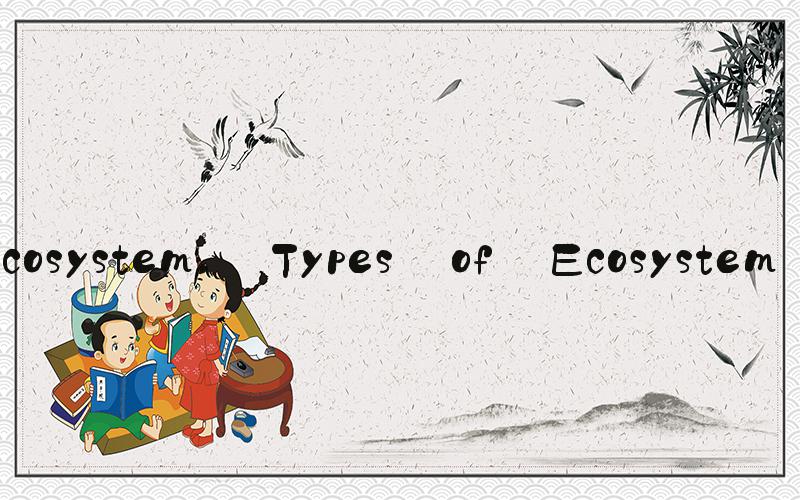
 Introduction
Introduction Ecosystem refers to the natural environment that comprises living organisms and non-living components in an interdependent relationship. It is an essential ecological system that plays a crucial role in the survival of life on earth. The ecosystem includes a range of living organisms such as plants, animals, and microorganisms that live in a particular area and interact with each other and the environment. The non-living components, such as air, water, soil, sunlight, and minerals, support the growth and development of living organisms and help maintain the balance of the ecosystem.
Types of EcosystemThere are various types of ecosystems on earth, depending on climate, geography, and topography. The major ones are discussed below:
Terrestrial EcosystemTerrestrial ecosystems comprise ecosystems found on land, such as forests, grasslands, deserts, and mountains. These ecosystems have different types of flora and fauna, which are adapted to different climatic conditions and soil types.
Aquatic EcosystemAquatic ecosystems include the ecosystems found in water bodies, such as oceans, rivers, lakes, and wetlands. These ecosystems are characterized by the presence of aquatic plants and animals that depend on water for their survival.
Artificial EcosystemArtificial ecosystems are those that are created by humans, such as urban parks, gardens, and fish farms. They may have a limited diversity of species as compared to natural ecosystems, but they serve a specific purpose.
Importance of EcosystemsEcosystems play a critical role in maintaining the balance of nature and the survival of life on earth. The importance of ecosystems can be discussed under the following headings:
BiodiversityEcosystems are key to maintaining biodiversity on earth. They provide a habitat for a variety of living organisms, including plants, animals, and microorganisms. These organisms play a vital role in the food chain and support the growth and survival of other organisms.
Climate RegulationEcosystems regulate the earth's climate by absorbing carbon dioxide and other greenhouse gases from the atmosphere. They act as carbon sinks and help in reducing the impact of climate change.
Water CycleEcosystems are crucial in the water cycle as they regulate the flow of water by storing, releasing, and purifying it. This helps in preventing floods and droughts and ensures a steady water supply for human use.
Soil ConservationEcosystems are essential in soil conservation as they prevent soil erosion and maintain the fertility of the soil. They also help in retaining soil moisture, which is vital for plant growth.
Threats to EcosystemsDespite their importance, ecosystems are under significant threat from human activities and natural disasters. Some of the major threats are discussed below:
Habitat DestructionHuman activities, such as deforestation, urbanization, and land-use change, have led to the destruction of natural habitats, which has resulted in the loss of biodiversity and ecosystem services.
PollutionPollution from human activities, such as industrialization, agriculture, and transportation, has resulted in the contamination of air, water, and soil, which has adverse effects on ecosystems and their inhabitants.
Climate ChangeClimate change caused by the emission of greenhouse gases is one of the most significant threats to ecosystems. It has adverse effects on biodiversity, water resources, soil quality, and agricultural productivity.
Conservation of EcosystemsTo ensure the survival of ecosystems, it is essential to conserve and protect them from further damage. Some of the ways to conserve ecosystems are:
Protected AreasProtected areas such as national parks, wildlife sanctuaries, and biosphere reserves help in conserving ecosystems by protecting biodiversity and ecosystem services.
Sustainable DevelopmentSustainable development practices that balance economic growth with environmental protection can help in conserving ecosystems. It involves the use of renewable resources and the reduction of waste and pollution.
Education and AwarenessEducation and awareness programs can help in creating awareness about the importance of ecosystems and their conservation. It can encourage people to take action to conserve ecosystems by reducing their impact on the environment and supporting conservation efforts.
ConclusionEcosystems are crucial in maintaining the balance of nature and the survival of life on earth. They provide various ecosystem services that are essential for human well-being. The threats to ecosystems can be overcome through conservation efforts and sustainable development practices. It is essential to recognize the importance of ecosystems and take action to protect and conserve them for future generations.
